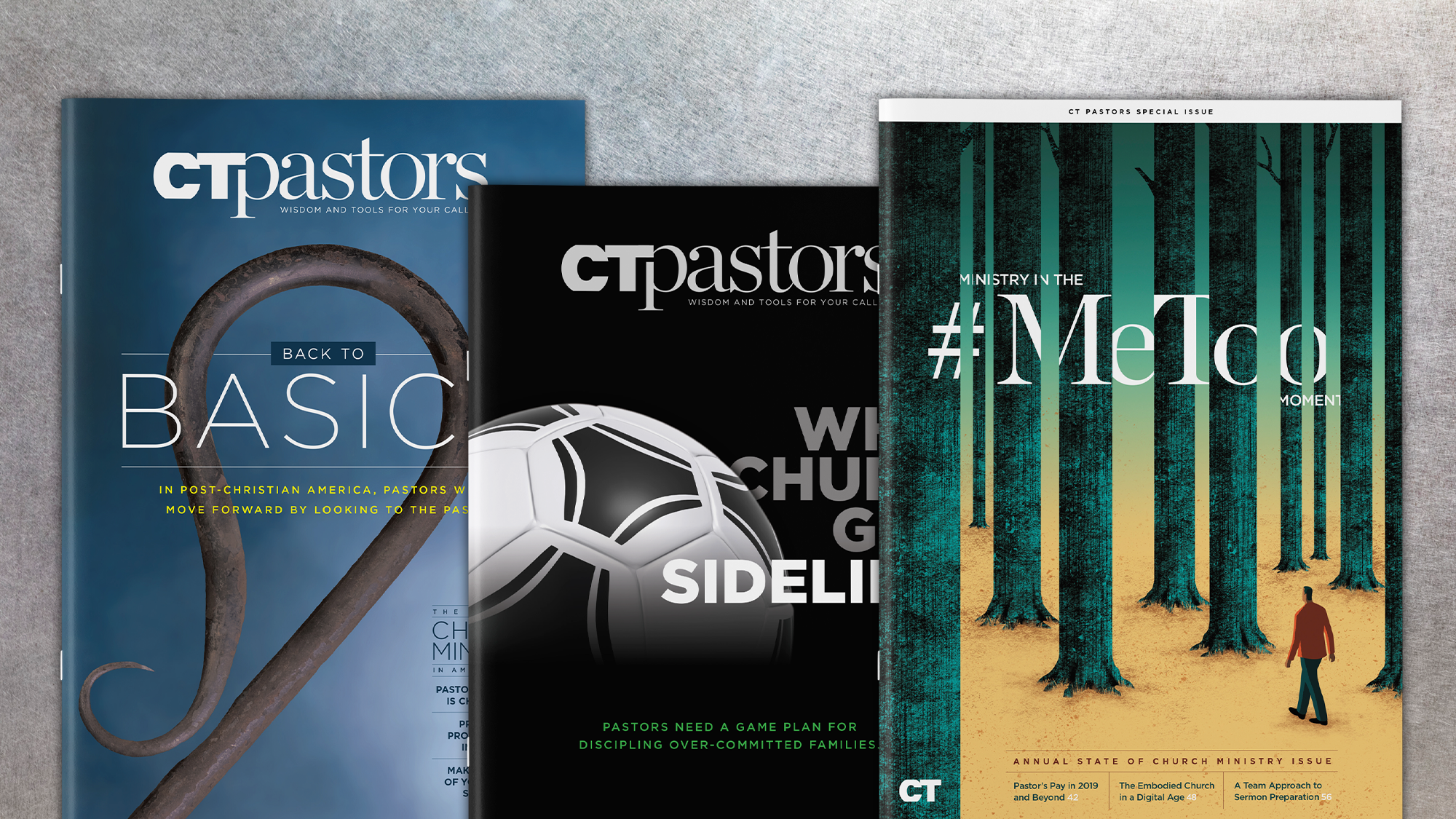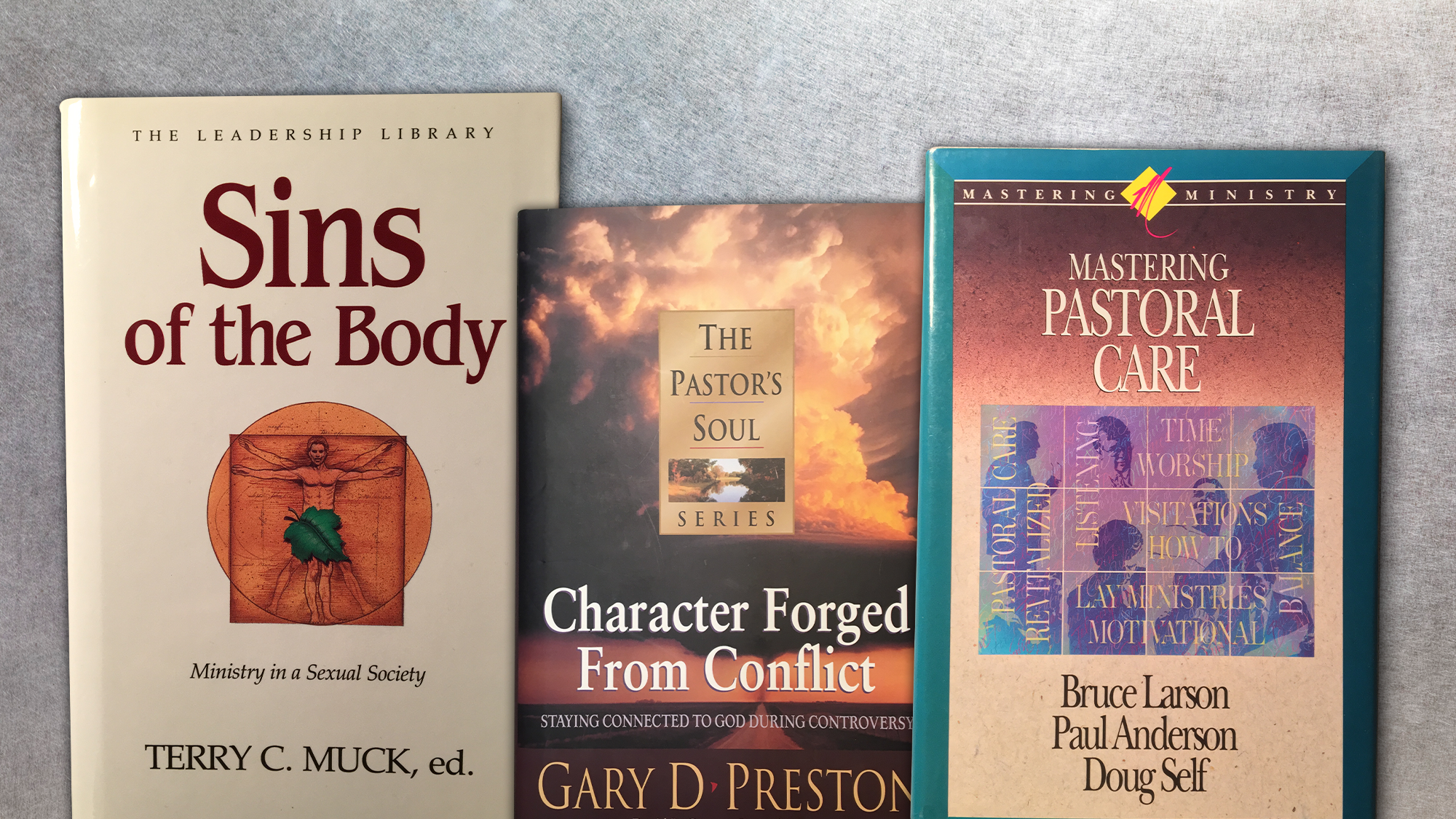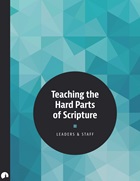
Are folks in your congregation chomping at the bit to know God’s story—the Bible? I hope so, but that’s often not the case. If you are a pastor or leader struggling to get people to engage in the text as I have, consider changing strategy. Try teaching Scripture as if you are wooing people to enter into the biblical story.
Ted Ward, one of my academic mentors, said, “To know and not to do is not to know.” I knew the Bible from my early years, winning Sword Drills and Bible memory contests. None of that was a waste, but my life was not changed by simply knowing Scripture. According to Ward, “It’s not that what we teach is worthless, but the way we teach it makes it useless.” Most churches have teaching ministries—Bible classes, Sunday school, children’s ministry, and even men’s ministry—so we are teaching our people. How well, though, does that teaching lead to life change?
A. W. Tozer, in Man: The Dwelling Place of God, made these radical statements:
In a very real sense no man can teach another; he can only aid him to teach himself. ... What the learner contributes to the learning process is fully as important as anything contributed by the teacher. If nothing is contributed by the learner the results are useless; at best there will be but the artificial creation of another teacher who can repeat the dreary work on someone else, ad infi nitum. ... Perception of ideas rather than the storing of them should be the aim of education. The mind should be an eye to see with rather than a bin to store facts in.
David Kinnaman, president of the Barna Group, said in a December 2016 episode of The Phil Vischer Podcastthat evangelical pastors are skilled at developing and communicating well-crafted sermons. In fact, the sermon has become the main source of spiritual input for many people. Kinnaman added that as important and necessary as sermons are, they are not enough. He called for a different pedagogy, a different way of teaching people in the church (in addition to sermons) that—in essence—woos people to be spiritually formed.
Sage on the Stage
For generations, the unspoken mantra in a classroom has been “I talk; you listen. I teach; you learn.” To illustrate this, I once heard a professor say that she gets up early on days when she teaches to rehearse her lecture because she sees it as a performance. In this model, the teacher is a “sage on the stage” and learners are the audience—passively absorbing information. The church is not immune to this approach.
According to Tozer and Ward, little formational learning—learning that results in life change—can happen through lecture-style teaching alone. The sage-on-the-stage approach tells people what to think, not how to think. It can make learners feel disempowered and inadequate to engage content—for instance, the Bible—on their own time, when the teacher isn’t present. Christian formation requires a different pedagogy.
I have witnessed firsthand what Brazilian educator Paulo Freire calls the “embedded culture of silence.” Many people are more comfortable being told what to think about Scripture than being empowered to think about it for themselves. Some fear looking ignorant if they try to speak up when an “expert” is present. In order to woo people to enter into God’s story, we must remedy these unintended and often unconscious attitudes.
For most of my schooling, I experienced this traditional teaching method. I was good at it. I mastered the content and tested well—but I could do little with what I learned. It took me years to discover how to think deeply and reflect critically. I’m not suggesting the sage-on-the-stage approach should be thrown out entirely. But alone, it is not adequate for developing followers of the Lord Jesus.
Guide at the Side
I’d like to suggest a different teaching model: a “guide at the side.” The infinitive “to educate” comes from Latin and has two forms: educare and educere, a small but significant difference. Educare means to mold, train, or instruct, like a sage; educere means to draw out, to cultivate—in other words, to guide. A sage assumes learners need the content the sage possesses. This approach can be helpful—for example, I know of a large church with a class in New Testament Greek. In that case, learners come with little prior knowledge to contribute. But in many learning situations, learners already possess knowledge and experiences that can contribute to everyone’s learning. A guide, then, is a co-learner with them, helping learners think deeply through discussion and reflection in order to change how they live.
I was first wooed into Scripture by a lay teacher named Doug, who acted as a guide on the side. Every Sunday 15 to 20 adults sat in a circle in a dingy basement. Doug presented a current societal problem relevant to us, pointed us to pertinent Scripture, posed a question, and let us have at it. He never resolved the problem or answered his own question. Instead, Doug always left us with one “bottom line”: Jesus is Lord, and we are to follow and obey him. Our group discussions left me pondering and mesmerized—so much so that I continued to explore the issue throughout the week.
Looking back, Doug’s teaching method reminds me of the way Jesus taught. Matthew 4:23 identifies Jesus’ ministry tasks while he was here on earth as teaching, preaching, and healing. Jesus was a master homiletician but also a master teacher. I had never focused specifically on his teaching methods until I heard Ted Ward name them: telling stories, asking questions, and being silent. About 15 years ago, I came across Herman Horne’s Jesus the Teacher: Examining His Expertise in Education. Each of the 20 chapters is full of unanswered questions focusing on a specific method used by Jesus to teach—such as object lessons, word pictures, modeling, and the primary methods named by Ward. Horne writes, “Jesus began by winning attention through openers that centered on students’ interests; then he established some point of contact with the hearers on the physical or spiritual plane. ... Jesus based his teaching on the vital problems in the lives of his students.” Jesus wooed his listeners, engaging them in the learning experience.
Develop Wooing Strategies
So how do we woo the people in our churches into Bible engagement? Consider Paul’s words to Titus on how to instruct the slaves who were teachers in their masters’ households: “In every way ... make the teaching about God our Savior attractive” (Titus 2:10). The ESV uses the words “adorn the doctrine of God our Savior.” Paul challenges Titus to teach slaves to woo their masters into a relationship with their Savior. What do you imagine Titus did to accomplish that directive? What might the slaves have done as a result?
God himself provides a model for teaching in Isaiah 41. He rehearses with Isaiah what he has been doing with and for the children of Israel. He also describes the work he will do in the future, including the ecological restoration he will carry out. Notice in verse 20 that he wants his people to see and know, to consider and understand that his hand has done this. The sequence of those verbs is significant. First comes a sensory experience—seeing. Then comes knowing, which in this context implies “relationship with.” Next God wants them to consider, to reflect on what they have seen and known. And then comes understanding—aha! I get it! This is a helpful sequence that we can use as a model.
Even before I noticed this sequence in Isaiah, I developed my own steps for creating a lesson plan that are complementary to those in Isaiah. I call them the Five -ATES to EducATE. They include LocATE, ElaborATE, IlluminATE, IntegrATE, and ActivATE. As noted earlier, to educate means to lead or draw out from not knowing into knowing or relating to the subject—in this case, God’s story. The LocATE step identifies a problem or need the learners have that the content will address. ElaborATE develops the problem in a way that drives learners to resolve their problem. IlluminATE is the step in which content is presented. That can be done by a sage on the stage or a video lecture, or it can be done in the style of Donald L. Finkel, who wrote Teaching with Your Mouth Shutand emphasized handouts with text, commentaries, and case studies to help people teach themselves. The IntegrATE step has learners identify a way the truth of Scripture would relieve their problem. Finally, the ActivATE step challenges learners to determine a way they need to change because of insight from that truth, and to name someone to whom they will be accountable to follow through on that change.
Become a Wooing Teacher
1. Pedagogy can’t change until epistemology changes. In other words, my teaching won’t change until I first change my understanding of how formational learning happens. Once I have a fuller understanding of how people learn and grow, I can explore new models of teaching. Remember, though, that because people’s brains differ, one teaching approach will not fit all the people in your church or ministry. The best thing teachers can do is work to understand when to use a guide-at-the-side approach, a sage-on-the-stage approach, or a combination of the two.
2. Create learning activities to promote connections among learners. Formational learning happens best in community, so spend time building connections. Use activities to help people get to know one another. For instance, you might provide construction paper for each person to tear a shape that tells something about themselves. Or ask participants to bring an object from home that depicts what their week was like. Shared experiences also grow connections, so you might design a simple liturgy to begin each session the same way. Include a simple hymn, a brief Scripture, and a common prayer. This provides identity and unifies the learning community.
3. Create a space conducive to learning. Avoid rows of chairs where people look at the back of each other’s heads. Rather, cluster people so they can interact. One church I know of built an outdoor fire pit and purchased round umbrella tables for hospitable summertime learning spaces.
4. Remind learners that the Bible contains stories about real people who lived in real places at real points in time. That awareness can make their stories more intriguing. To help learners connect biblical narratives with current events, empower them to use their imaginations. Encourage them to work together to envision the context of the passage. Have them describe what they imagine might have happened the next day in the story. Prepare open-ended questions to distribute to each group—then remove yourself so you’re not the focal point of discussion. Let learners identify the human author’s original intent in writing the book being studied. Provide helpful sections from a commentary to guide them. Finally, take some risks. Consider using Play-Doh (yes, Play-Doh!) to have the adults shape something abstract that connects with the content. For example, ask people to shape what they think Elijah learned from the Mount Carmel incident. Or have them draw a picture, selecting appropriate colors to denote the feelings associated with the story of the rich young ruler when he conversed with Jesus.
5. Establish consistent groups for accountability. Keep clusters of people together so they can establish connections. Encourage consistent attendance to demonstrate that the work you’re doing together matters. Suggest people check in with others in their group during the week to exchange prayer needs and pray for each other. To prevent groups from becoming enmeshed, switch up groups every 8 to 12 weeks, ideally when you change topics or studies.
6. Make time each session for reflection. For example, you might say at the beginning of a session, “Think about ways last week’s session had an impact on you, and share in your cluster.” Or you might end your time together by debriefing your experience. You could ask, “Based on this week’s aim, what do you need to apply to your own life?” Remember Tozer’s words: no man or woman can teach another. Rather, teachers can only help learners teach themselves. This challenges me to refine my teaching, winnowing away what is ineffective and sharpening what works, so learners enter Scripture eagerly.
God is a master potter (Is. 29:16; Jer. 18:6; Rom. 9:20–24). He and only he, through the Holy Spirit, fashions people into the character of his Son. That relieves the pressure on me. I am responsible for the learning environment and the approaches that support the work of the Spirit. With his aid, we who teach are able to woo his followers into a deeper relationship with our Lord and Savior, Jesus Christ. It is exciting to see learners, with eyes lit up, say, “I get it. The Spirit of God spoke to me through that lesson.” When I hear that, I know wooing happened, and the teacher in me says, "Yahoo!"
Scottie May is associate professor emerita in the Christian Formation & Ministry department at Wheaton College. She has a doctorate in educational ministries from Trinity Seminary.

Support Our Work
Subscribe to CT for less than $4.25/month

























